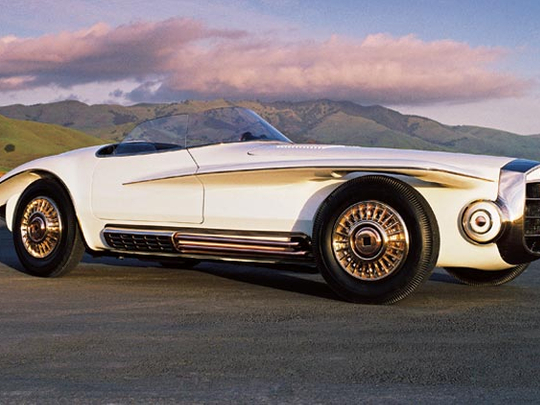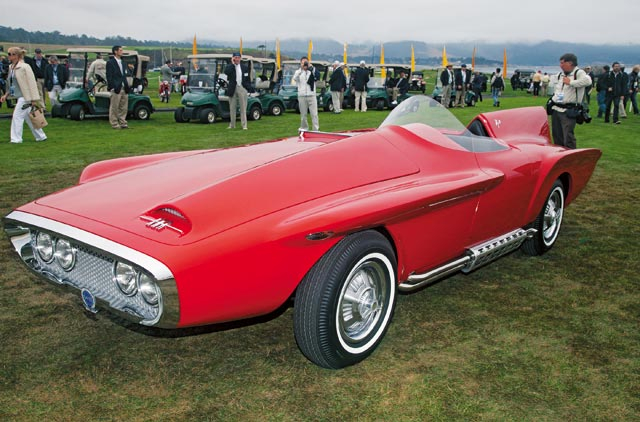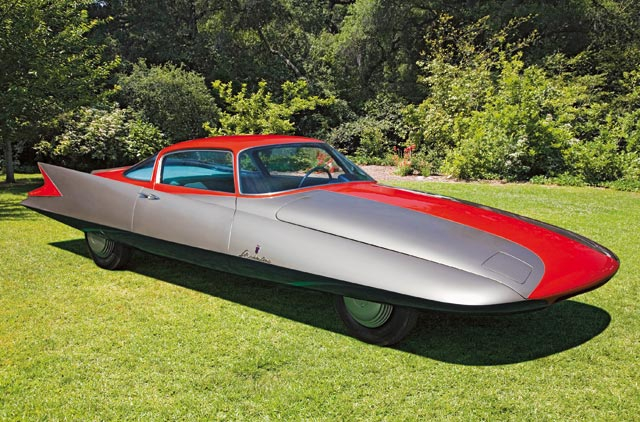
Exner designed this show car to demonstrate the use of copper in automobiles. Image Credit: Supplied picture
Start talking about illustrious American car designers, and you’re likely to shout out “Harley Earl!” before running out of ideas and going quiet. Moving into more modern times, and it’s the likes of Chris Bangle, Frank Stephenson, and Jason Castriota amongst many others who have left their marks on American auto industry today.
But one man’s name seems to elude most car design conversations; Virgil Exner. In fact he’s so elusive, that even Chrysler’s press department couldn’t sort us out with an image of the man to grace this page.
Never mind that though, because Exner’s life’s work speaks for itself.
Virgil Max Exner Senior’s life was laid out in front of him from the moment he entered this world. He was born in Ann Arbor, Michigan, a stone’s throw away from Motor City. He studied art, but he struggled to pay the fees so he got a bit-part job at an art studio.
Specialising in drawing advertisements, he ended up doing a lot of work for car companies, which led to him getting noticed by the legendary Harley Earl of General Motors. Earl hired the young Exner, and while still in his twenties, he worked himself up to the top of Pontiac’s styling studio.
But GM wasn’t his calling. Instead of teaming up with Earl to make what would have been the greatest design duo in motoring history, the two were destined to be rivals. Exner joined Chrysler in 1949, and set about reinventing the brand in order to challenge the dominant forces of GM and Ford, which held vastly more market share in the US, thanks to the outlandish invention of fins and lavish overuse of chrome.
Before Exner arrived, Chrysler depended on its engineers to simply slap on some body panels that fitted the mechanical components. But Exner changed all that, injecting style into what became Chrysler’s glory era of design.
Instead of boring, boxy and old-fashioned grocery-getters, Exner built Chrysler an image of bravura and performance, specifically with models such as the Imperial and the original Chrysler 300C.
It wasn’t easy. Exner had to work hard to convince the bigwigs that change was needed, but he finally got his studio. The brand’s entire corporate structure was changed largely because of this one man, who steered Chrysler away from being a has-been in the sales chart, to playing a leading role in the industry.
Exner’s work with Italian design house Ghia also resulted in some of the most ostentatious and futuristic concept cars ever, which earned Chrysler unprecedented attention at auto shows.
His simple method for a stylish vehicle called for a low roofline, short front overhands, and all the leading character lines moving forward rear-to-front; all cues still used in studios the world over. Exner continued working, even into retirement, putting his touch to boats and attempting a failed revival of the storied Duesenberg name, but succeeding (briefly) in raising Stutz from the dead.













